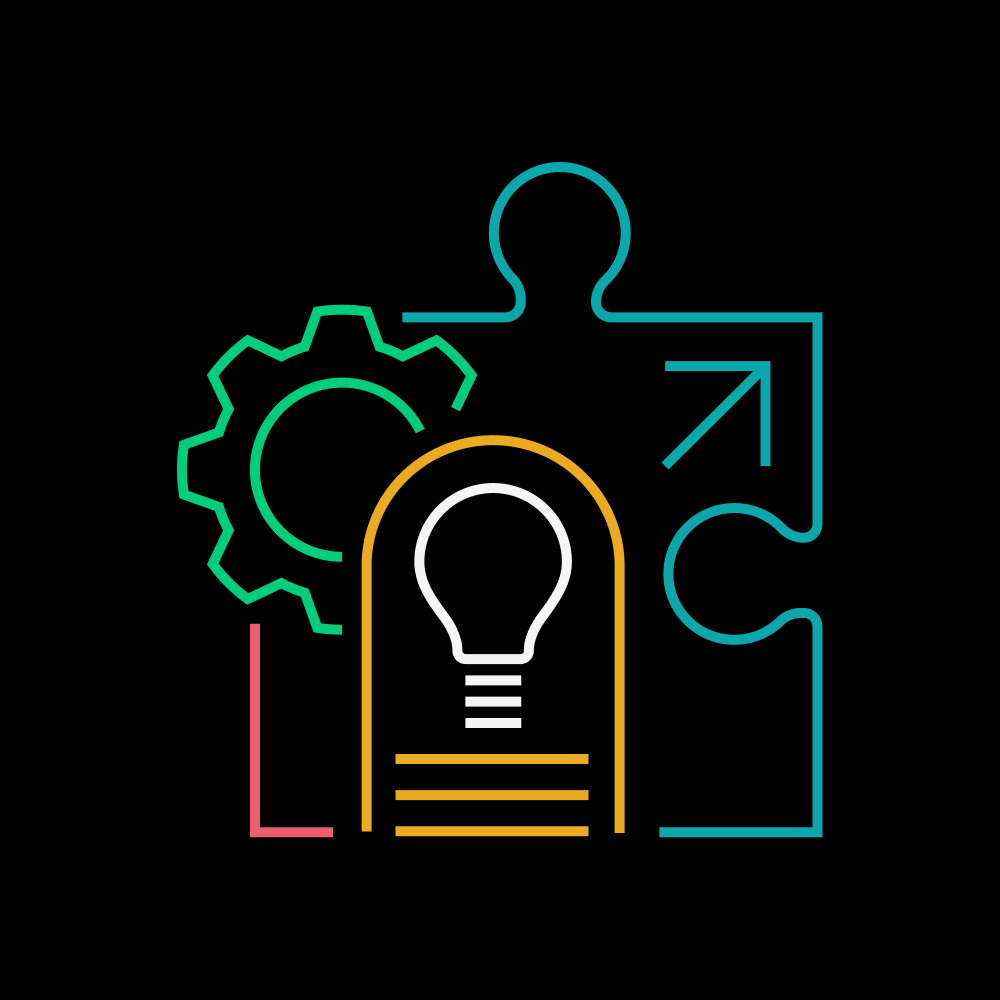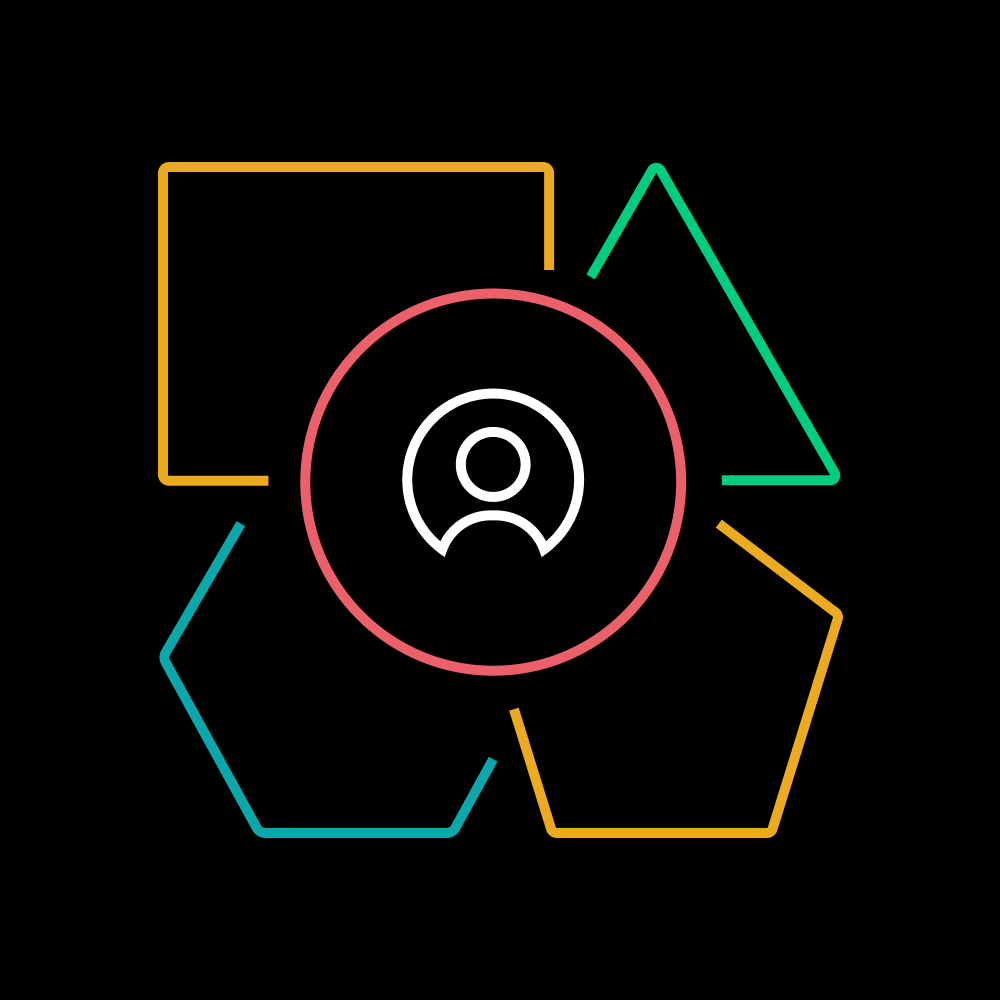
Unlock creativity and innovation for distributed teams
Build new processes to brainstorm and innovate that can generate bigger, better ideas
Posted November 10, 2020 by Helen Kupp
Summary
Don’t buy into the myth that creativity only happens over a whiteboard. Try research-backed and simple changes to processes that can help your teams be more creative together.
Top 4 takeaways
Background
The absence of an office and the spontaneous interactions that often spark new ideas is driving many leaders to ask: how can we continue to innovate?

There’s an underlying assumption and belief that the only way to generate innovative ideas is by pulling a group of individuals into a room and brainstorming ideas on the whiteboard. Despite being a universal method for ideation, countless studies have shown that brainstorming is a waste of time.
“A meta-analytic review of over 800 teams indicated that individuals are more likely to generate a higher number of original ideas when they don’t interact with others. Brainstorming is particularly likely to harm productivity in large teams, when teams are closely supervised, and when performance is oral rather than written.”
– HBR, Why Group Brainstorming is a waste of time
Relying on traditional in-person, live whiteboarding techniques can also further alienate remote workers on a hybrid team who can’t fully participate in the brainstorm process.
Brainwrite instead of brainstorm
Taking a hybrid approach to idea generation by alternating between individual work and group work has been shown to generate both a larger number and higher quality of ideas than group work alone.
“For most innovation challenges, an organization would prefer 99 bad ideas and 1 outstanding idea to 100 merely good ideas. In the world of innovation, the extremes are what matter, not the average or the norm…(And) we find evidence that the best idea generated in the hybrid structure is better than the best idea generated by a team. This result is driven by the fact that the hybrid structure results in about three times as many ideas per unit of time and that these ideas have significantly higher average quality.”
– INSEAD, Idea Generation and the Quality of the Best Idea
That’s because group brainstorming can often create social anxiety if people—especially those who are more introverted—are worried about other’s views of their ideas. Group sharing, too, is limited by only being able to express one idea at a time. Instead, start with asynchronous, individual work first and allow everyone to commit ideas to paper. Give everyone time to think deeply and freely about ideas without judgement or bias. Only combine and share out after all ideas have been recorded.
There are two main advantages from this approach. First, you create space for all ideas to be shared and heard instead of only those from the loudest people in the room. And second, you have a quick way to highlight popular ideas by looking at how often it shows up among the group.
Think digital-first
People may love multi-colored post-it notes and physically placing ideas up on a whiteboard, but the meeting room whiteboard is often less accessible to remote teammates. It’s often hard to see the ink on the page, and remote workers require additional help from someone else in the room to move ideas and concepts around a physical whiteboard.
Instead, share and refine ideas digital-first by using tools like Miro, Mural, or a simple Google Doc. Some of these tools make it easy for everyone (even remote workers) to add ideas, vote, or just move things around throughout the discussion. The silver lining: a record of ideas and votes are automatically documented and can be shared back in case anyone was unable to make the session. No need for that junior member of the team to carry a folder full of post-it notes back to his or her desk, and painstakingly decipher everyone’s handwriting.
Mix it up
Research shows that weak ties matter in bringing in new perspectives for creative thinking. The people you spend a lot of time with tend to swim in the same pool of information as you. Friendly outsiders, however, bring new information, perspectives, and opportunities that can drive creative connections. Find opportunities to mix people up and bring in unique perspectives to a problem or opportunity. Do this intentionally and frequently.
There are lots of different ways to do this. For example, bring in external speakers for team meetings, create planning processes that commingle teams, or cross-fertilize updates by topic area. Tools like Donut can also be useful in automating cross-fertilization of ideas by pairing random groups of people together on predetermined cadence.
Don’t forget to have fun together
We often forget to give ourselves space to relax especially while jumping from one remote meeting to the next and balancing a never ending set of work and life responsibilities. At least in an office setting we used to get brief respites as we walked from one room to another —maybe sneaking in a Red Vine or handful of M&Ms along the way. But we know that we are more creative when we are having fun. It’s more important with hybrid teams to be intentional about fun to help teams relax, bond, and be creative together.

Remote friendly fun doesn’t have to be complicated. It can be as simple as themed virtual backgrounds for your team meeting, sharing your upcoming weekend plans, or spinning up fun team polls like: Chocolate? Or Pumpkin Spice? The important part is doing this intentionally, and doing this often.


